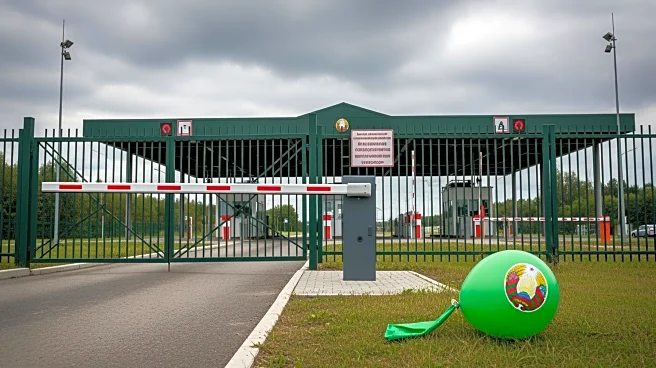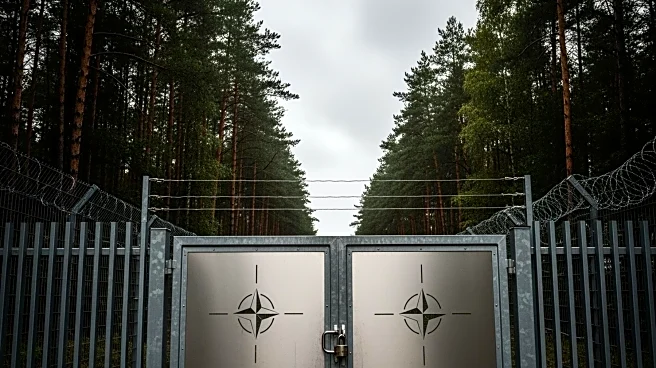What's Happening?
Lithuania has closed its border with Belarus following multiple violations of its airspace by balloons suspected of smuggling cigarettes. Prime Minister Inga Ruginienė announced that the country's armed
forces would take necessary measures to shoot down balloons. The closure comes amid heightened alert in Europe for airspace intrusions. Belarus has protested the move, claiming it violates citizens' rights and freedom of movement principles. The incidents have been described as hybrid threats by European Commission President Ursula von der Leyen.
Why It's Important?
The border closure is a significant response to perceived hybrid threats from Belarus, impacting diplomatic relations and regional security. The situation highlights the challenges faced by European countries in securing their airspace against unconventional threats. Lithuania's actions could lead to increased sanctions and diplomatic measures within the EU. The potential invocation of NATO's Article 4 underscores the seriousness of the situation, as it would involve consultations with allies about security threats.
What's Next?
Lithuania may push for additional sanctions against Belarus at the EU level and consider invoking NATO's Article 4 for urgent discussions. The situation could lead to further diplomatic tensions, with Belarus likely to respond to Lithuania's actions. The incidents may prompt discussions on enhancing airspace security and cooperation among European nations. Lithuania's actions could influence other countries facing similar threats to take similar measures.
Beyond the Headlines
The use of balloons for smuggling highlights the evolving nature of cross-border criminal activities and the challenges in addressing them. The incidents may prompt discussions on technological advancements in airspace monitoring and the need for international cooperation to address hybrid threats. The situation also raises questions about the effectiveness of current security measures and the role of international organizations in maintaining regional stability.











